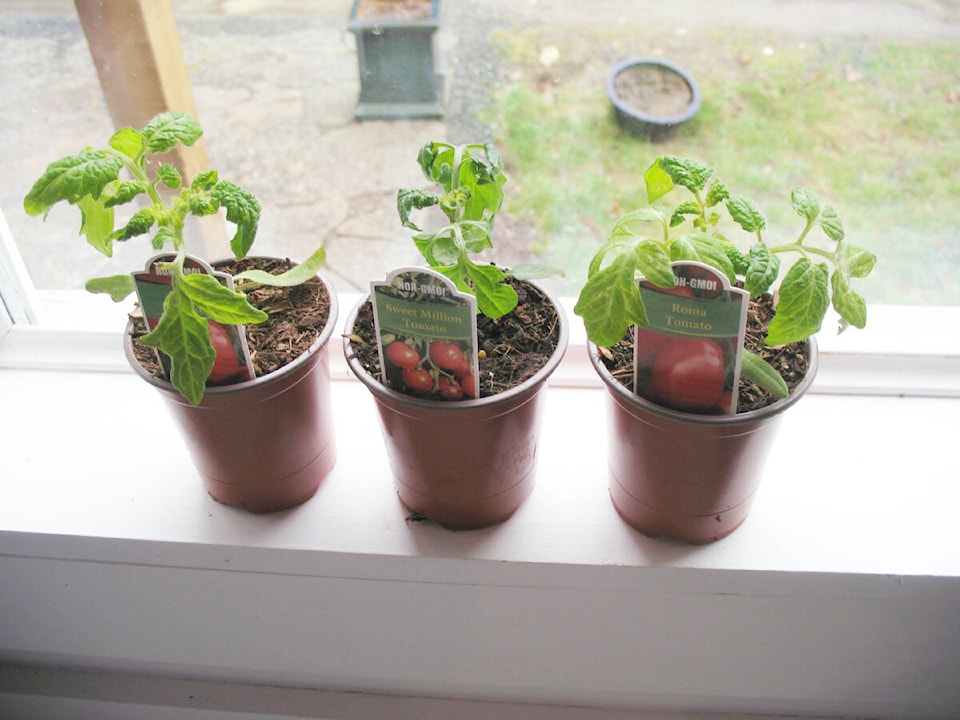By Mary Lowther
Even tomatoes like the appropriately named “Early Girl” require more summer than we get, so if I want a crop I need to start them indoors now, or buy seedlings in a few weeks. The Country Grocer sells good seedlings and I will try some of them this year, but I’m also starting plants with my own saved seed.
Books tell me that tomatoes do best when night time temperatures outside are at least 10 C, but I can do better than that with a device called Wall O’Water, a plastic cylinder one can fill with water that will retain heat overnight when placed around a plant, protecting it from nocturnal cold. I have been using them for years with great results.
When my tomatoes get about six inches high, I fill my Walls ‘O Water and set them in the sun to warm up for one day, transplant the seedlings inside the protective layer and leave them until I see tomato leaves sticking out of the top. By this time the temperature outside should be tomato friendly. This year I also intend to warm up the soil several days ahead of time with clear plastic laid over the bed, after I’ve added a quarter inch of compost and organic fertilizer at the rate of four litres per hundred square feet and dug that in. David thinks that’s a little obsessive compulsive but he eats the fruit without hesitation, which is a little rich coming from someone who files his books under the Dewey Decimal System.
There are two types of tomato plants: determinate and indeterminate. Determinate varieties don’t develop vines, fruit earlier and never need trimming, although they usually need some kind of support. Indeterminate tomatoes grow vines needing support, will continue to grow until they’re stopped and develop fruit later. I plan on growing both in order to extend my harvest.
I’ll follow Steve Solomon’s recommendation to cover the determinate tomato plants with a clear plastic tunnel to keep them warm so they’ll fruit sooner and I’ll provide some kind of support for the indeterminate varieties. I can usually convince David that he wants to do this by making an initial attempt with the wrong tools and materiel so he can show me how to do it properly.
In his book Tomatoes, Cucumbers and Melons author A.G. Puttoch suggests cutting off all the side shoots, leaving just the one central stalk to grow on and topping this one when it reaches the height of his trellis. Other writers say to leave all the side shoots on, but when I’ve done this the vines became increasingly difficult to tie up and the tomatoes were smaller, so I have developed a compromise. I allow one side shoot to develop beside the main one and nip off all the rest when they are small. The first side shoot that grows from the bottom is usually not robust so I nip this one off and start allowing the second one to grow on.
If only one vine is kept they can be planted 18 inches apart; if two are allowed to grow I plant them two feet apart, and if no vines are nipped off I planted them three or more feet apart. This allows for the roots to expand appropriately for the plant’s needs and gives leaves access to air.
I’ll have more to say about tomato growing next week.
Please contact mary_lowther@yahoo.ca with questions and suggestions since I need all the help I can get.
